1. Overview
Princess Mary, born Victoria Alexandra Alice Mary on 25 April 1897, was a prominent member of the British royal family, serving as the only daughter of King George V and Queen Mary. She was the sister of kings Edward VIII and George VI, and an aunt to Elizabeth II. Throughout her life, Princess Mary dedicated herself to extensive public service and charitable causes, particularly during both World War I and World War II. She was actively involved in supporting servicemen and their families, youth movements, and various welfare organizations. In 1922, she married Henry Lascelles, Viscount Lascelles (later the 6th Earl of Harewood), with whom she had two sons. In recognition of her status and contributions, her father conferred upon her the distinguished title of Princess Royal in 1932. Her life was largely characterized by duty and a commitment to social welfare, making her an uncontroversial figure within the monarchy.
2. Early Life and Education
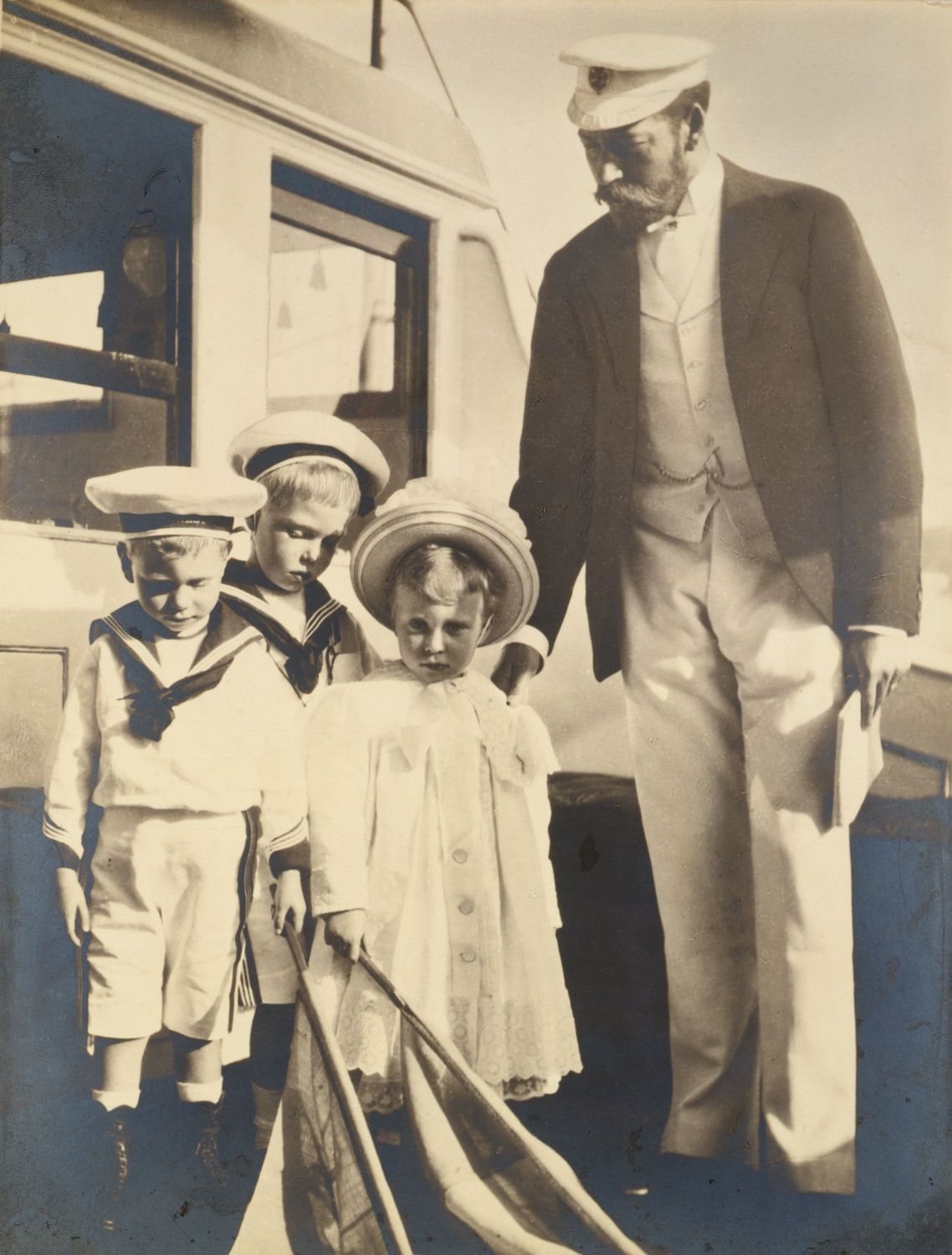
Princess Mary was born on 25 April 1897 at York Cottage on the Sandringham Estate in Norfolk, during the reign of her paternal great-grandmother, Queen Victoria. She was the third child and only daughter of the then Duke and Duchess of York. Her father was the only surviving son of the Prince and Princess of Wales, while her mother was the eldest child and only daughter of the Duke and Duchess of Teck. She was given the full name Victoria Alexandra Alice Mary, honouring her paternal great-grandmother Queen Victoria, her paternal grandmother Alexandra, Princess of Wales, her maternal grandmother Mary Adelaide, Duchess of Teck, and her great-aunt Alice, Grand Duchess of Hesse and by Rhine, with whom she shared a birthday. She was primarily known by her last given name, Mary. At birth, she was fifth in the line of succession, preceded by her grandfather, father, and elder brothers Edward and Albert. Her position in the line of succession later moved down with the births of her younger brothers Henry, George, and John.
She was baptised at St Mary Magdalene's Church near Sandringham on 7 June 1897 by William Dalrymple Maclagan, Archbishop of York. Her godparents included Queen Victoria (her great-grandmother), the King of the Hellenes (her paternal great-uncle), the Dowager Empress of Russia (her paternal great-aunt), the Prince and Princess of Wales (her paternal grandparents), the Duchess of Teck (her maternal grandmother), Princess Victoria of Wales (her paternal aunt), and Prince Francis of Teck (her maternal uncle). Her grandfather ascended the throne in 1901 when Mary was three years old.
Princess Mary received her education from governesses at home, though she shared some lessons with her brothers, Edward, Albert, and Henry. She became fluent in both German and French. From an early age, she developed a lifelong passion for horses and horse racing. Her first significant public appearance was at the coronation of her parents, King George V and Queen Mary, which took place at Westminster Abbey on 22 June 1911.
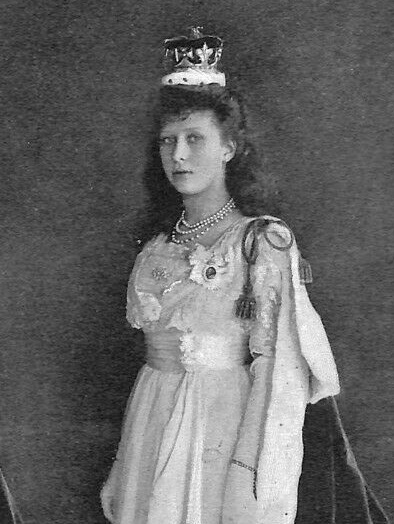
3. Charity Work and Public Service
Princess Mary's life was marked by extensive involvement in charitable activities and public service, demonstrating a deep commitment to social welfare, community support, and youth development across various periods of significant historical change.
3.1. World War I Efforts and Gift Fund
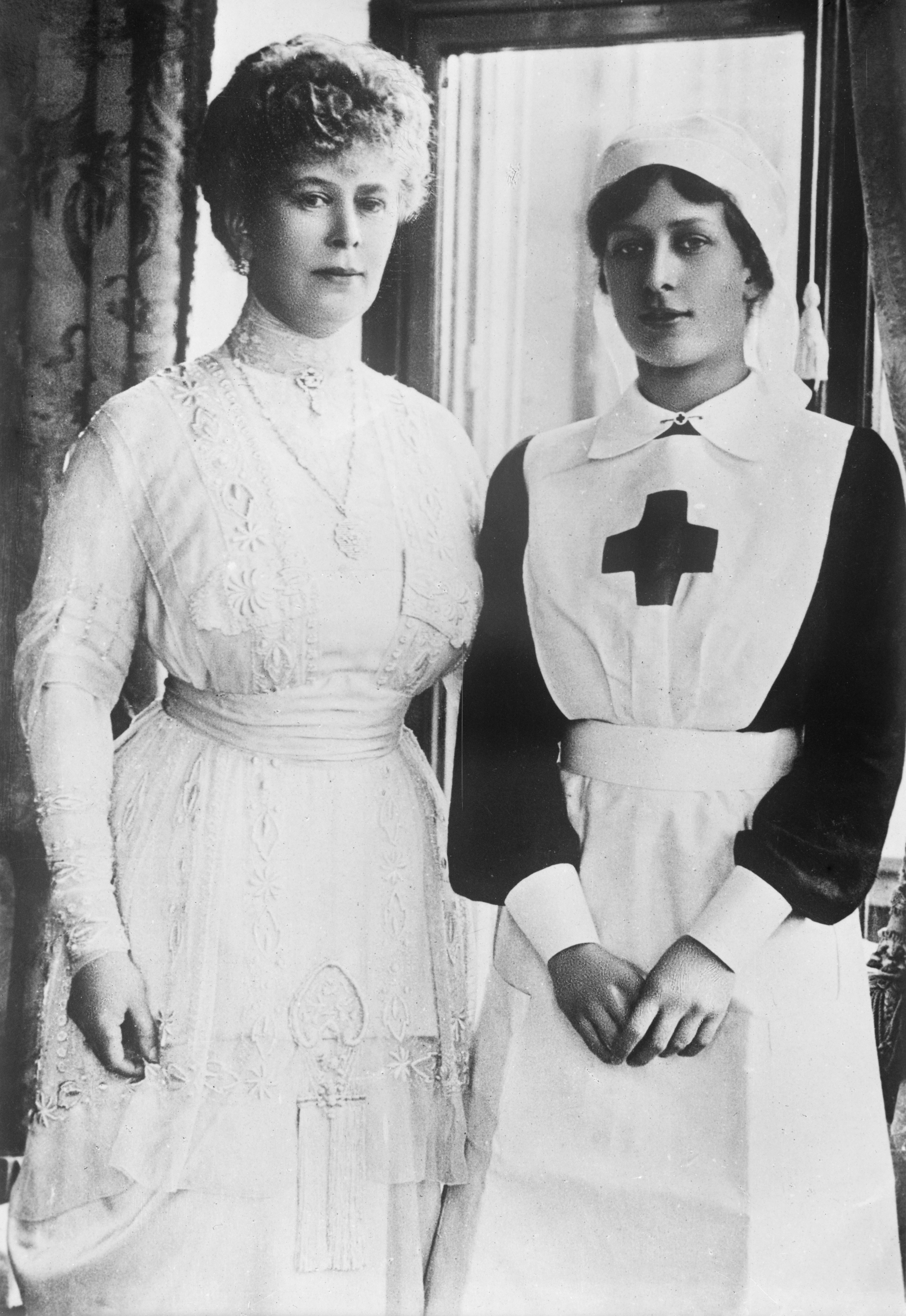
During World War I, Princess Mary actively supported British servicemen and their families. She frequently visited hospitals and welfare organizations alongside her mother, Queen Mary, assisting with projects aimed at providing comfort and aid. A notable initiative was Princess Mary's Christmas Gift Fund, established in 1914. Through this fund, gifts valued at 100.00 K GBP were distributed to serving British soldiers and sailors for Christmas. This amount is equivalent to approximately 12.10 M GBP in 2023 when adjusted for inflation. In June 1918, she embarked on a nursing course at Great Ormond Street Hospital, dedicating two days a week to work in the Alexandra Ward. Following the Armistice on 20 November 1918, Princess Mary became the first member of the royal family to visit France, where she toured centres associated with Queen Alexandra's Imperial Military Nursing Service or Voluntary Aid Detachment Units, as well as hospitals caring for wounded soldiers.
3.2. Support for Youth and Welfare Organizations
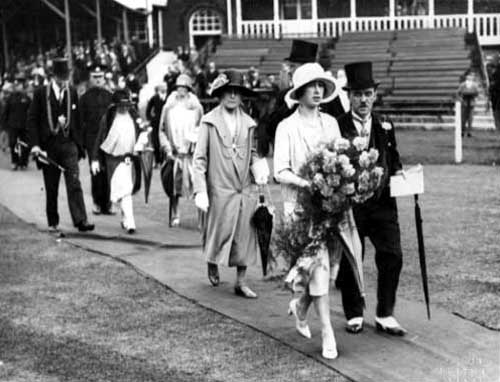
Princess Mary maintained a lifelong dedication to youth movements and welfare organizations. She played an active role in promoting the Girl Guide movement, serving as its honorary president from 1920 until her death. In recognition of her contributions, she received the Silver Fish Award, the highest adult honour in Girl Guiding. Leading up to her marriage, a unique fundraising effort saw girls and women across the British Empire named Mary (or variants like Marie, May, and Miriam) form "The Marys of the Empire" to contribute to her wedding present. Princess Mary dedicated this fund, along with half the proceeds from the exhibition of her wedding gifts, totalling 10.00 K GBP, to the Girl Guides Association for the purchase and upkeep of the Foxlease estate, enabling the project to proceed.
She became the first patron of the Not Forgotten Association in 1921, a position she held until her death in 1965. The charity's inaugural Christmas Tea Party, organized by Mary, was held at St James's Palace in 1921, where she hosted 600 wounded servicemen. This event has continued annually since. In 1926, Princess Mary was appointed commandant-in-chief of the British Red Cross Detachments. She also promoted the VADs and the Land Girls movements.
Her patronage extended to educational and cultural bodies. In 1931, she was appointed patron of the Yorkshire Ladies Council of Education, and she also served as patron of the Girls' Patriotic Union of Day Schools. Her connections to charitable endeavours in Leeds were notable; in July 1927, at a garden party at the Headingley Cricket Ground, she was served tea alongside dignitaries including members of the Middleton family, such as Olive Middleton, great-grandmother of Catherine, Princess of Wales. Olive Middleton was a member of Princess Mary's fundraising committee for the Leeds General Infirmary, which Mary became patron of in 1936. Olive's first cousin, Elinor G. Lupton, launched the infirmary's fundraising appeal in 1933, with Princess Mary's sister-in-law, the Hon. Mrs Edward Lascelles, serving as a vice-president alongside Olive Middleton and Jessie Beatrice Kitson.
3.3. World War II Service
At the outbreak of World War II, Princess Mary took on a significant leadership role, becoming Chief Controller and later Controller Commandant of the Auxiliary Territorial Service (ATS). This organization was later renamed the Women's Royal Army Corps (WRAC) in 1949. In this capacity, she travelled extensively across the country, visiting ATS and WRAC units, wartime canteens, and other welfare organizations, demonstrating her unwavering support for the war effort.
Following the death in 1942 of her younger brother, the Duke of Kent, she became the president of Papworth Hospital. Her military affiliations continued after the war; in 1950, the Princess Royal became air chief commandant of Princess Mary's Royal Air Force Nursing Service. In 1956, she received the honorary rank of General in the British Army. Furthermore, in 1949, the 10th Gurkha Rifles were renamed the 10th Princess Mary's Own Gurkha Rifles in her honour.
3.4. Patronages and Cultural Interests
Beyond her direct wartime service, Princess Mary was a dedicated patron of various arts and cultural institutions. In the 1920s, she was a patron of the Leeds Triennial Musical Festival. By the 1940s, she regularly attended opening nights and many performances of the festival, often accompanied by her elder son, George, and his wife, the Countess of Harewood, a former concert pianist. George himself was a noted music critic and served as the artistic director of the Leeds Triennial Musical Festival.
Princess Mary and her son, George Lascelles, 7th Earl of Harewood, were also patrons of the Yorkshire Symphony Orchestra. The orchestra frequently performed at soirées held at their family residence, Harewood House. Richard Noël Middleton, a co-founder of the orchestra, was on friendly terms with the Princess and attended these concerts.
In 1951, Princess Mary was appointed Chancellor of the University of Leeds, a position she held until her death. This role further underscored her engagement with academic life and her commitment to education in Yorkshire.
3.5. Royal Duties and Representation
As a senior member of the British royal family, Princess Mary consistently carried out official duties both within the United Kingdom and abroad. She attended the coronation of Queen Elizabeth II in June 1953, a significant national event. She also frequently represented the Queen at important international events, such as the independence celebrations of Trinidad and Tobago in 1962 and Zambia in 1964. One of her final official engagements was representing the Queen at the funeral of Queen Louise of Sweden in early March 1965. In March 1953, she cut short her tour of the West Indies and made a surprise diversion to New York, where she met with her brother, the Duke of Windsor, and his wife, the Duchess of Windsor. She posed for photographs with them before she and the duke boarded a ship to visit their ailing mother, Queen Mary. Later, in March 1965, she visited the Duke of Windsor at the London Clinic while he recovered from eye surgery, meeting the Duchess of Windsor in one of their few encounters.
4. Marriage and Family
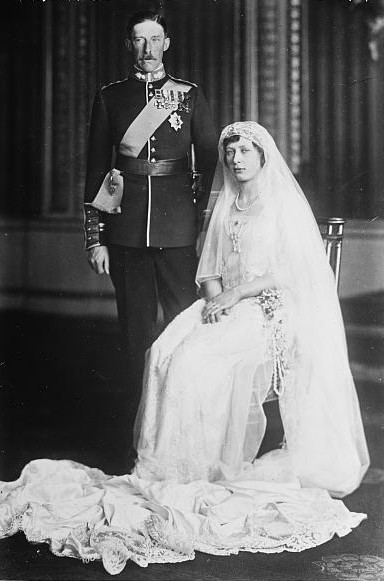
On 28 February 1922, Princess Mary married Viscount Lascelles, the elder son of the 5th Earl of Harewood and Lady Florence Bridgeman, daughter of the 3rd Earl of Bradford. At the time of their marriage, the bride was 24 years old, and the groom was 39.
Their wedding took place at Westminster Abbey and attracted large crowds along the route to Buckingham Palace. The ceremony was notable as the first royal wedding to be extensively covered by fashion magazines, including Vogue. Princess Mary's gown, designed by Messrs Raville, featured intricate emblems of Britain and India. This occasion also marked the first royal event in which Lady Elizabeth Bowes-Lyon, a close friend of Princess Mary, participated as one of the bridesmaids. Lady Elizabeth later married Mary's brother, Prince Albert, and became queen consort of the United Kingdom upon his accession as George VI in 1936.
The bridesmaids at Princess Mary's wedding included:
- Lady Elizabeth Bowes-Lyon (her sister-in-law, later Queen Elizabeth The Queen Mother)
- Princess Maud Duff
- Lady Mary Cambridge
- Lady May Cambridge
- Lady Diana Bridgeman
- Lady Mary Thynne
- Lady Rachel Cavendish
- Lady Doris Gordon-Lennox
Princess Mary and Lord Lascelles had two sons:
- George Lascelles, 7th Earl of Harewood (7 February 1923 - 11 July 2011); he married Marion Stein in 1949, had issue, and divorced in 1967. He then married Patricia Elizabeth Tuckwell in 1967 and had further issue.
- The Honourable Gerald Lascelles (21 August 1924 - 27 February 1998); he married Angela Dowding in 1952, had issue, and divorced in 1978. He subsequently married Elizabeth Collingwood and had issue.
4.1. Family homes and interests
The Princess and her husband maintained residences in London (Chesterfield House, Westminster) and in Yorkshire, initially at Goldsborough Hall and later at Harewood House. At Goldsborough Hall, Princess Mary commissioned internal alterations by architect Sydney Kitson to better suit the upbringing of her two children. She also oversaw the development of formal gardens, including beech-hedge-lined long borders extending for a quarter of a mile down an avenue of lime trees. These lime trees were notably planted by her visiting relatives throughout the 1920s, including her parents, King George V and Queen Mary.
Upon becoming the Countess of Harewood following her father-in-law's death in 1929, Princess Mary moved to Harewood House, the Lascelles family seat. She took a keen interest in the interior decoration and renovation of the stately home. In her farming pursuits, Princess Mary became an expert in cattle breeding and served on the board of trustees of the Royal Agricultural Society of England, an organization of which her husband had previously been president. In December 2012, some of Princess Mary's personal belongings were sold in "Harewood: Collecting in the Royal Tradition," an auction organized by Christie's.
In the first half of the 20th century, Princess Mary occasionally rode with the Bramham Moor Hunt, of which Lord Harewood was the Master of the Hunt. She also frequently hosted horse-racing enthusiasts at Harewood House parties for race events held at Wetherby and York. While some rumours circulated about an unhappy marriage, her eldest son, George, 7th Earl of Harewood, firmly refuted these claims in his memoirs, stating that his parents always spent time together and shared many common friends and hobbies.
5. Princess Royal Title
On 6 October 1929, Lord Lascelles, who had been made a Knight of the Garter upon his marriage, succeeded his father as the 6th Earl of Harewood, Viscount Lascelles, and Baron Harewood. On 1 January 1932, George V declared that his only daughter should bear the title Princess Royal, succeeding her aunt Princess Louise, Duchess of Fife, who had died a year earlier. This made Mary the sixth individual to hold this distinguished title.
The Princess Royal was particularly close to her eldest brother, the Prince of Wales, known as David within the family. He later became Edward VIII upon their father's death in 1936. After the abdication crisis of 1936, she and her husband visited the former Edward VIII, by then created Duke of Windsor, at Enzesfeld Castle near Vienna, where they enjoyed their stay with him. Later, in November 1947, she reportedly declined to attend the wedding of her niece, Princess Elizabeth, to Lieutenant Philip Mountbatten. While ill health was given as the official reason, it was widely believed to be in protest of the Duke of Windsor not being invited. However, in March 1953, she cut short her tour of the West Indies and made a surprise diversion to New York, where she met with the Duke and Duchess of Windsor. She posed for photographs with them before she and the duke boarded a ship to visit their ailing mother, Queen Mary. Later, in March 1965, she visited the Duke of Windsor at the London Clinic while he recovered from eye surgery, meeting the Duchess of Windsor in one of their few encounters.
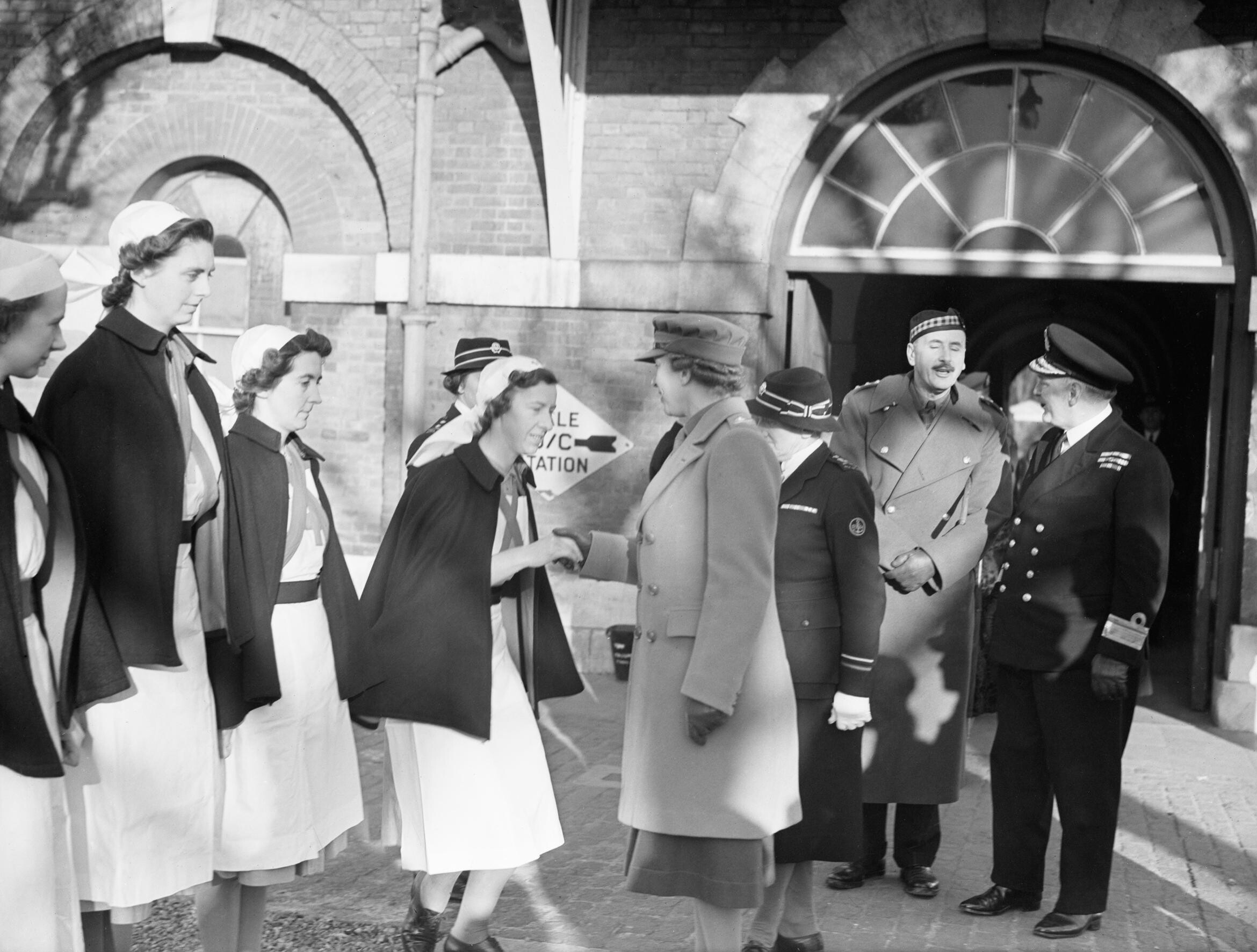
6. Titles, Styles, Honours, and Arms
Princess Mary held various titles and styles throughout her life, reflecting her lineage and evolving status within the British royal family. She was also bestowed with numerous honours and held several honorary military appointments.
6.1. Titles and Styles
- 25 April 1897 - 28 May 1898**: Her Highness Princess Mary of York
- 28 May 1898 - 22 January 1901**: Her Royal Highness Princess Mary of York
- 22 January 1901 - 9 November 1901**: Her Royal Highness Princess Mary of Cornwall and York
- 9 November 1901 - 6 May 1910**: Her Royal Highness Princess Mary of Wales
- 6 May 1910 - 22 February 1922**: Her Royal Highness The Princess Mary
- 22 February 1922 - 6 October 1929**: Her Royal Highness The Princess Mary, Viscountess Lascelles
- 6 October 1929 - 1 January 1932**: Her Royal Highness The Princess Mary, Countess of Harewood
- 1 January 1932 - 28 March 1965**: Her Royal Highness The Princess Royal
6.2. Honours
6.2.1. British, Commonwealth, and Empire Honours
- CI: Companion of the Crown of India, 25 April 1919
- GCStJ: Dame Grand Cross of St John of Jerusalem, 12 May 1926
- GBE: Dame Grand Cross of the Order of the British Empire, 3 June 1927
- GCVO: Dame Grand Cross of the Royal Victorian Order, 11 May 1937
- RRC: Member of the Royal Red Cross
- Royal Family Order of King George V
- Royal Family Order of King George VI
- Royal Family Order of Queen Elizabeth II
6.2.2. Foreign Honours
- Spain: Dame of the Order of Queen Maria Luisa, 12 July 1926
6.2.3. Freedom of the City
- 1952: Freeman of the City of York
6.2.4. Honorary Military Appointments
- 1935: Colonel-in-Chief, of the Royal Corps of Signals
- 1939: Chief Controller and later Controller Commandant, of the Auxiliary Territorial Service
- 1950: Air Chief Commandant, of Princess Mary's Royal Air Force Nursing Service
6.2.5. Military Ranks
- 1956: General in the British Army
6.3. Arms
In 1931, Princess Mary, Princess Royal and Countess of Harewood, was granted her own personal arms. These arms were based on the royal arms, differenced by a label argent of three points, each bearing a cross gules.


Her personal banner of arms was used to signify her presence. A variant of this banner was also used in Scotland.

Her joint coat of arms with her husband, the 6th Earl of Harewood, combined their respective heraldry.
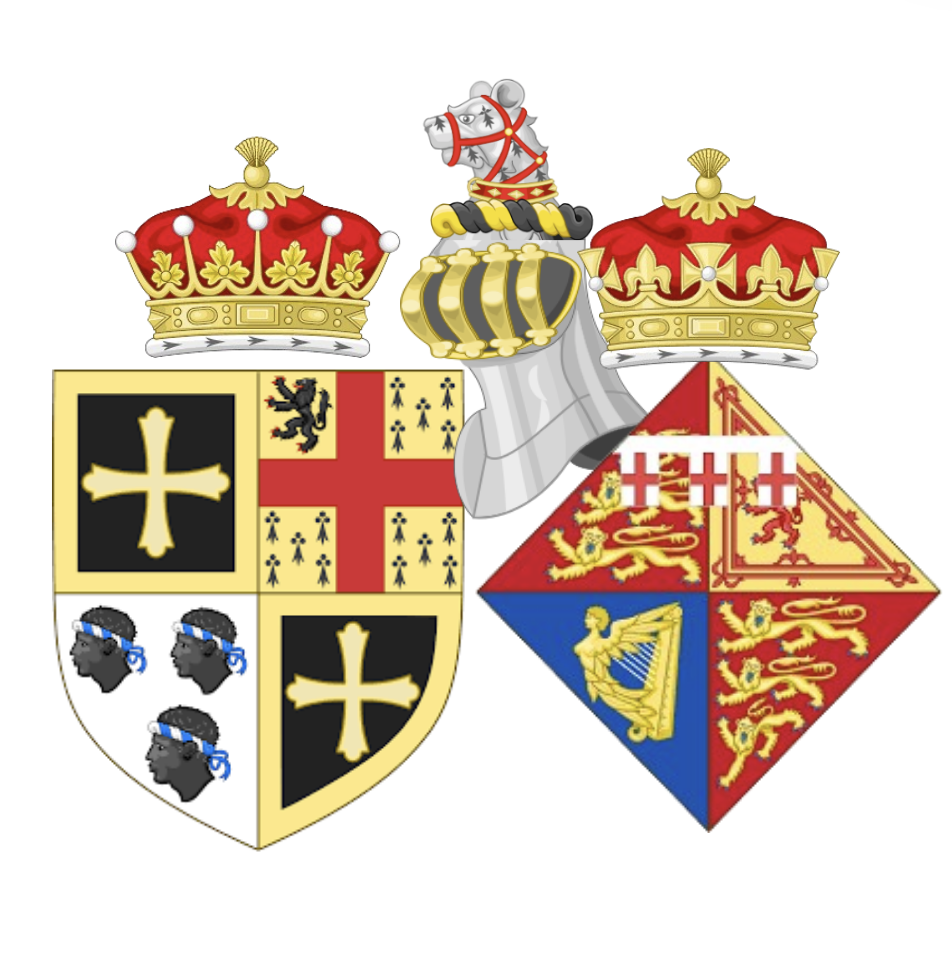
A plaque in the cloister of St Bartholomew-the-Great, London, marks the opening of five new bays by Viscountess Lascelles in 1928. It depicts the arms of the Viscount and Viscountess, along with Viscount Lascelles' motto, Ung roy, ung foy, ung loy - from his de Burgh ancestors, "one king, one faith, one law."
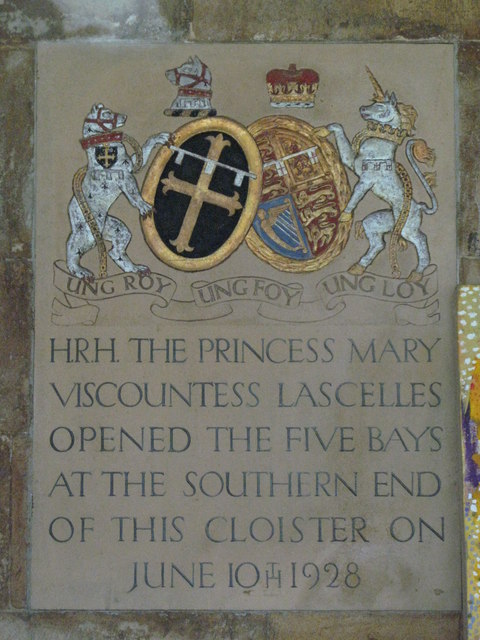
7. Ancestry
Princess Mary's ancestry traces back through several European royal houses, connecting her to a wide network of European royalty.
Her paternal grandparents were Edward VII, King of the United Kingdom, and Princess Alexandra of Denmark.
Her maternal grandparents were Francis, Duke of Teck, and Princess Mary Adelaide of Cambridge.
Her great-grandparents included:
- On her paternal side: Prince Albert of Saxe-Coburg and Gotha and Victoria, Queen of the United Kingdom; and Christian IX, King of Denmark and Princess Louise of Hesse-Kassel.
- On her maternal side: Duke Alexander of Württemberg and Countess Claudine Rhédey von Kis-Rhéde; and Prince Adolphus, Duke of Cambridge and Princess Augusta of Hesse-Kassel.
8. Death and Legacy
On 28 March 1965, Princess Mary had a fatal heart attack during a walk with her elder son, Lord Harewood, and his children within the grounds of the Harewood House estate. She was 67 years old. Following a private family funeral at York Minster, she was buried next to her husband in the Lascelles family vault at All Saints' Church, Harewood. A memorial service was also held at Westminster Abbey, London. Her will was sealed in London after her death, with her estate valued at 347.63 K GBP in 1965.
Princess Mary lived through the reigns of six British monarchs: her great-grandmother Queen Victoria, her grandfather Edward VII, her father George V, her brothers Edward VIII and George VI, and her niece Elizabeth II. She is generally remembered as an uncontroversial figure within the royal family, admired for her dedication to public service.
In popular culture, Princess Mary was portrayed by Kate Phillips in the 2019 film Downton Abbey. Her image was also featured on the 10 Canadian dollar banknote issued in 1935. During the British Mandate of Palestine, a major street in Jerusalem next to the Old City was named Princess Mary Street. After the establishment of Israel, this street was renamed Queen Shlomzion Street, in honour of the ancient Jewish queen.